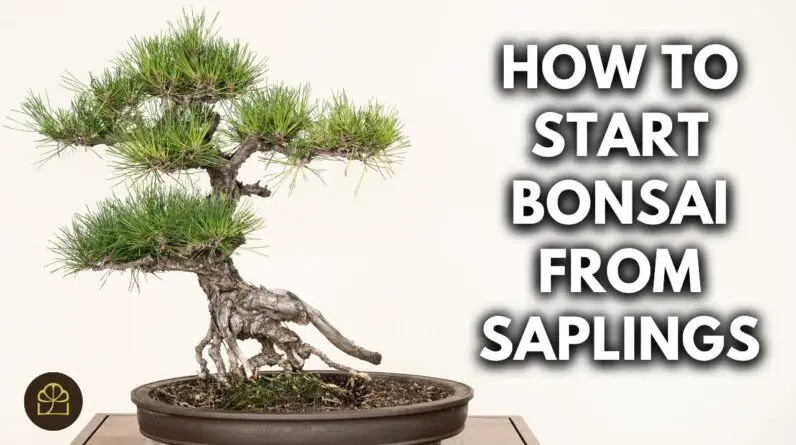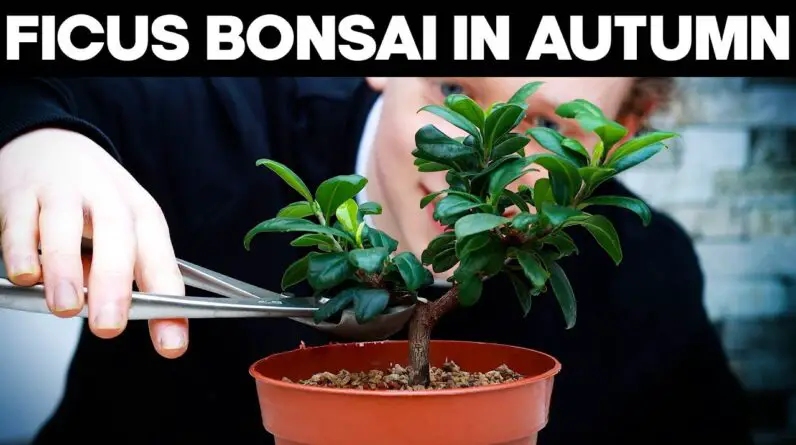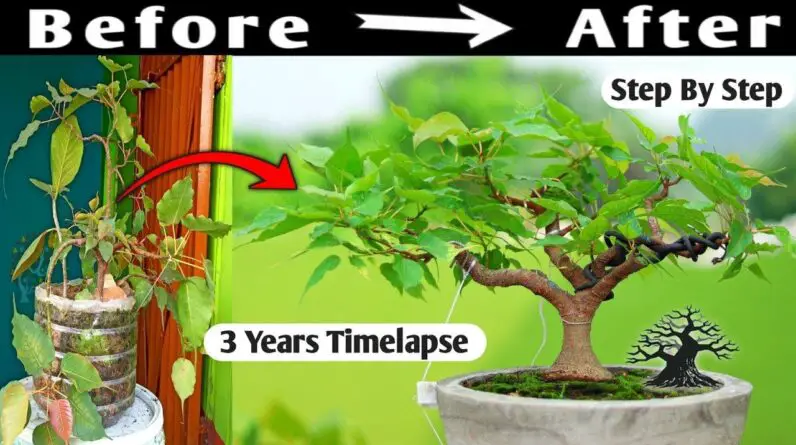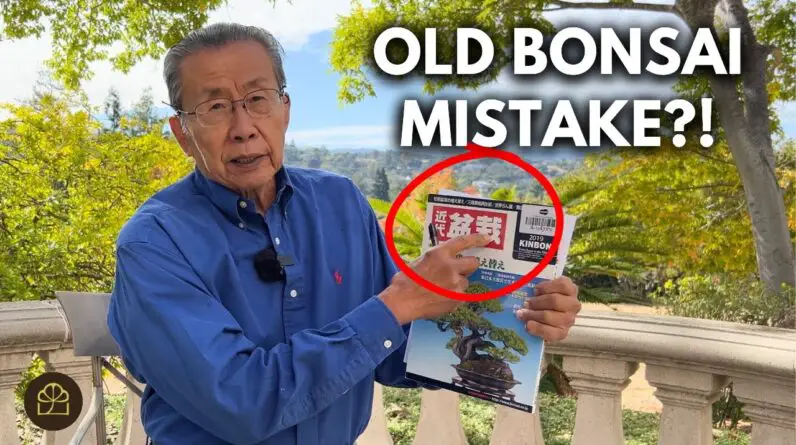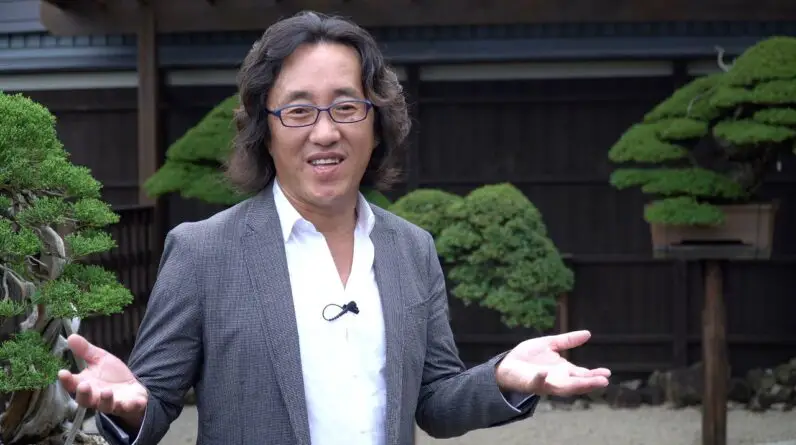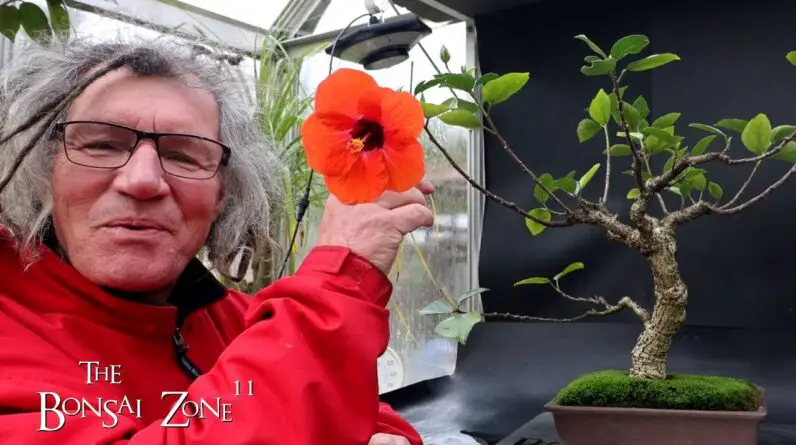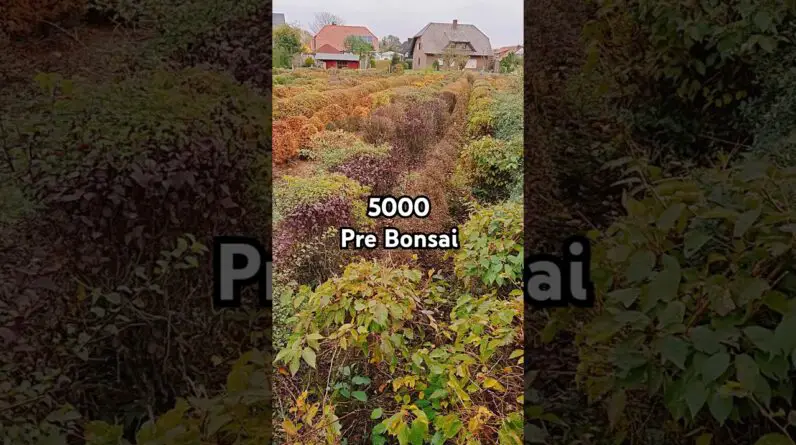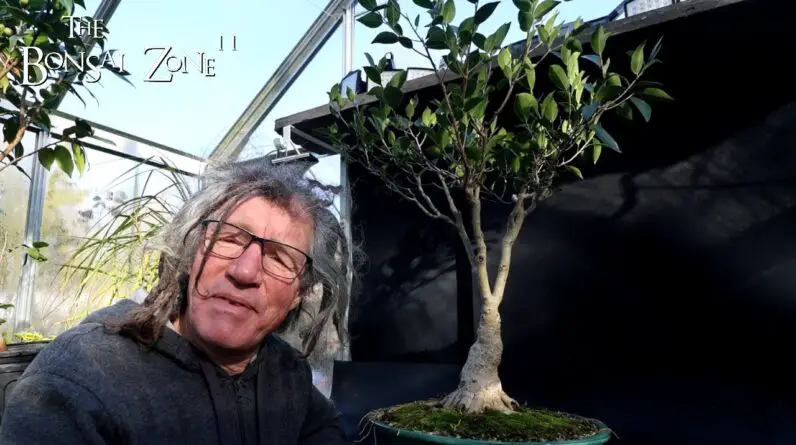Intend to find out how to make an Apple bonsai tree? In this video by Bonsai Empire, they reveal you how to prune and wire an Apple tree that is around 15 years old. The video was filmed during fall, when the tree was loaded with small apple trees.
Bonsai Realm is passionate regarding sharing the living art of Bonsai and created this DIY tutorial to assist and motivate newbies. This video clip is part of their online training courses, however they use lots of various other cost-free videos as well.
So if you have an interest in discovering more concerning Bonsai methods, head over to Bonsai Empire’s website!
In the video, they explain the procedure of trimming and wiring this Apple bonsai tree. They utilize tiny trimming shears, pliers, and wire cutters. The leading branch is the very first to be cut, and then they concentrate on two thicker branches to achieve the desired shape.
They demonstrate the value of a 360-degree approach when cutting and wiring to stay clear of any type of dead angles. After the pruning and electrical wiring, the tree looks extra polished and well balanced. With normal maintenance, this tree will continue to prosper and expand brand-new branches in the upcoming spring. If you want to discover more regarding pruning, circuitry, and repotting methods, consider joining Bonsai Empire’s on the internet training courses and get to professional guidance and the opportunity to ask the teachers inquiries straight.
Apple Bonsai Tree: An Introduction
Welcome to the globe of apple bonsai trees! Producing and cultivating a mini apple tree can be a gratifying and fulfilling pastime. Not only do these bonsai trees give a beautiful visual, yet they additionally provide the chance to expand your very own fruits in a little and manageable area.
In this extensive write-up, we will direct you with the procedure of choosing the right apple tree range, gathering the required products, growing the tree from seeds, pruning and wiring methods, proper maintenance, potting considerations, and the differences in between outside and indoor apple bonsai trees.
Think about the Dimension of the Bonsai
When choosing an apple tree range for bonsai growing, it is necessary to consider the supreme size of the tree. Considering that bonsai trees are meant to be mini variations of their larger equivalents, picking a variety that normally remains little is vital. Look for apple tree varieties that are understood for their portable growth and smaller stature, such as columnar apple trees or normally dwarf selections. This will certainly make sure that your bonsai continues to be symmetrical and is simpler to manage.
Choose a Crab Apple Tree Range
Crab apple trees, with their little and lively fruits, are often the favored choice for apple bonsai farming. These trees naturally have a lot more delicate and symmetrical functions, making them well-suited for bonsai looks. Furthermore, crab apple trees are hardy and adaptable, making them less complicated to care for and preserve as bonsai samplings. Take into consideration varieties such as Malus sylvestris or Malus floribunda, which are frequently utilized in bonsai growing.
Think about the Environment and Location
Prior to choosing the apple tree variety for your bonsai, it is very important to take into consideration the climate and area where you plan to expand it. Different apple tree selections thrive in various environments, so pick a selection that is appropriate to your details area. In addition, remember the amount of sunshine and temperature level needs of the chosen variety. A lot of apple trees need complete sun to prosper, so make sure that your chosen place supplies enough sunshine throughout the day.
Select a Suitable Bonsai Pot
Selecting the right bonsai pot is critical for the wellness and looks of your apple bonsai tree. Try to find a pot that is proportionate to the size of your tree and complements its overall style. Bonsai pots can be found in different products such as ceramic, plastic, or clay. Each product has its very own advantages and factors to consider, so pick one that matches your individual preferences and the certain demands of your apple bonsai tree.
Obtain Quality Bonsai Dirt
Top quality bonsai dirt is essential for the healthy and balanced growth of your apple bonsai tree. The dirt ought to supply sufficient drainage while keeping adequate moisture for the tree’s roots. You can purchase pre-made bonsai soil mixes that are especially designed for bonsai farming, or you can produce your very own mix by combining parts such as Akadama, pumice, and lava rock. Experimentation with various dirt mixes may be needed to discover the ideal equilibrium for your apple bonsai tree.
Get Pruning and Circuitry Devices
Pruning and wiring are necessary methods for shaping and maintaining the form of your apple bonsai tree. To effectively trim and wire your bonsai, you will certainly require a set of correct devices. Some necessary devices consist of a concave branch cutter for exact pruning, bonsai cord cutters for taking care of the cable, and pliers or tweezers for complex job. Invest in top notch devices to make certain precision and lessen damage to your apple bonsai tree.
Collecting Apple Seeds
One of one of the most satisfying methods to start an apple bonsai tree is by growing it from seeds. You can accumulate apple seeds from ripe fruits or purchase them from trusted distributors. Ensure that the seeds are fresh and viable for the very best possibilities of germination.
Prep work of Seeds for Planting
Prior to planting the apple seeds, it is essential to prepare them for ideal germination. Beginning by soaking the seeds in water for 24 hours to soften the external seed layer. After soaking, eliminate the seeds from the water and allow them to completely dry for a couple of days. This procedure assists break the seed’s dormancy and increases the opportunities of successful germination.
Planting and Germination Process
When the seeds are prepared, plant them in small pots full of well-draining bonsai soil. Location the pots in a cozy and bright area, and maintain the dirt continually damp. Germination generally takes about two to 4 weeks, depending on the selection and environmental problems. As soon as the seed startings have sprouted, pick the healthiest ones to continue growing as your future apple bonsai trees.
Understanding Trimming Methods
Trimming is an important element of bonsai growing that aids preserve the tree’s size, form, and total aesthetic appeals. By uniquely getting rid of branches and foliage, you can attain the preferred kind and equilibrium. Find out about various pruning strategies such as maintenance trimming, branch pruning, and pinching to maintain the health and shape of your apple bonsai tree.
Determining the Right Branches to Trim
When trimming your apple bonsai tree, it is very important to recognize the branches that need to be pruned. Look for branches that disrupt the wanted form or impede the tree’s general balance. Get rid of any dead, damaged, or unwanted branches to advertise healthy growth and stop illness. Get in touch with bonsai resources or look for guidance from skilled bonsai enthusiasts if you’re uncertain which branches to prune.
Pruning to Attain Desired Forming
Pruning is not only regarding maintenance however additionally regarding forming your apple bonsai tree. Use pruning methods to direct the tree’s growth and attain the preferred shape and style. Take into consideration typical bonsai shapes such as official upright, slanting, or cascade, and adapt them to fit the attributes of your apple bonsai tree.
Preparing the Tree for Wiring
Wiring is one more essential strategy in bonsai growing that aids create and keep the wanted form and structure of your apple bonsai tree. Before using wires, guarantee that the branches and trunk are versatile sufficient to be adjusted without creating damages. Younger branches are extra adaptable and much easier to wire, while older branches may call for gradual flexing in time.
Selecting the Right Cord Dimension
Picking the appropriate cord size is crucial to avoid damaging the branches of your apple bonsai tree. The wire should be solid enough to hold the wanted shape without cutting into the bark. Pick a cord dimension that is roughly one-third of the density of the branch being wired. Copper or light weight aluminum cord is generally made use of, however see to it it is soft sufficient to be quickly shaped.
Using Electrical Wiring Techniques
To wire your apple bonsai tree, start by wrapping the cable at the base of the branch or trunk and then gently spiral it upwards, making sure to keep a 45-degree angle between the cable and the branch. Take care not to wrap the cord too snugly, as it can restrict the tree’s blood circulation and create damage. When the wanted form is accomplished, safeguard the cord by turning completions with each other or utilizing cable clips. Remove the cord after a couple of months to prevent it from cutting into the bark.
Watering and Moisture Control
Proper watering is essential for the health and wellness and vitality of your apple bonsai tree. The frequency and amount of water needed depend upon various variables such as the environment, pot size, and tree’s growth stage. Water your apple bonsai tree when the top inch of soil really feels completely dry, making certain that the water gets to the entire root system. Stay clear of overwatering, as it can lead to root rot and other fungal diseases.
Fertilizing and Nutrient Needs
Preserving soil fertility is essential for the healthy development of your apple bonsai tree. Apply a well balanced plant food during the growing season to supply the essential nutrients for optimal growth. Use natural or slow-release plant foods especially formulated for bonsai trees, complying with the suggested dosage directions. Frequently monitor the tree’s action to fertilizing and adjust the feeding routine accordingly.
Bug and Illness Administration
Like any other plant, apple bonsai trees can be vulnerable to various insects and diseases. Routinely examine your tree for signs of problem, such as tarnished fallen leaves, insects, or abnormal growth. If any kind of issues are discovered, promptly take ideal steps to control and get rid of the trouble. Take into consideration utilizing natural insect control approaches or talk to experts if needed.
Repotting Regularity and Timing
Repotting is an important task in bonsai farming that enables origin system wellness and overall growth control. The frequency and timing of repotting depend upon numerous aspects such as the age and development rate of the apple bonsai tree. As a basic standard, repotting is normally done every a couple of years, preferably throughout the very early springtime prior to the tree begins actively expanding.
Picking an Appropriate Bonsai Pot
When repotting your apple bonsai tree, pick a new pot that is a little larger than the existing one. Consider the visual appeals and total equilibrium of the tree when picking the pot’s form and design. Make certain that the pot supplies ample drain holes and is made from a product that appropriates for bonsai farming.
Hair Transplanting and Origin Trimming
During repotting, carefully eliminate the tree from its current pot and gently loosen up the root ball. Inspect the roots and cut any damaged or exceedingly long roots. This process, called root pruning, assists stimulate brand-new origin growth and maintains the tree’s origin system portable. After root pruning, place the tree in the new pot, guaranteeing that the roots are uniformly distributed and covered with fresh bonsai soil.
Appropriate Potting Strategies
When potting your apple bonsai tree, usage correct strategies to guarantee its stability and healthy development. Setting the tree a little off-center in the pot to produce a sense of activity and equilibrium. Secure the tree in position utilizing bonsai wires or rocks, and fill the remaining space in the pot with bonsai dirt, making certain that no air pockets are left. Water the newly potted tree thoroughly and check its recovery during the complying with weeks.
Advantages and Considerations for Outdoor Bonsai
Expanding an exterior apple bonsai tree permits it to experience the all-natural changing seasons, which can enhance its overall beauty. Outdoor bonsai trees generally have more space to grow and develop a stronger root system. However, outdoor bonsai trees require careful consideration of climate and weather conditions, protection from extreme temperature fluctuations, and regular exposure to sunlight.
Benefits and Challenges of Indoor Bonsai
Growing an apple bonsai tree indoors provides more controlled conditions and allows enthusiasts in colder climates to enjoy bonsai cultivation year-round. Indoor bonsai trees require careful attention to temperature, humidity, and lighting conditions. Supplemental lighting may be necessary, especially during the winter months when sunlight exposure is limited. Additionally, indoor bonsai trees may require more vigilant pest and disease management due to the controlled environment.
Creating and caring for an apple bonsai tree is a rewarding and fulfilling endeavor. With proper knowledge and techniques, you can enjoy the beauty of nature in a miniature form and even grow your own miniature apples.
By choosing the right variety, gathering the necessary materials, mastering pruning and wiring techniques, maintaining proper care, and selecting the right pot and location, you can cultivate a stunning apple bonsai tree that brings joy and tranquility to your surroundings.
Happy bonsai cultivation!
[sspostsincat category=”Fruit Bearing Bonsai Tree”]


